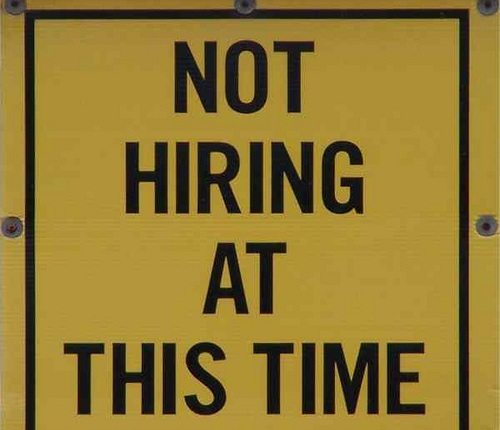
April 8, 2013; Source: The Wall Street Journal, “MarketWatch”
Don’t you feel that the monthly reports from the U.S. Department of Labor, reporting unemployment up or down and higher than expected or lower than expected increases in job creation are, after a while, difficult to absorb? It’s hard to tell whether the economy is making reasonable progress, sort of just staggering along, or heading for another plunge.
Sign up for our free newsletters
Subscribe to NPQ's newsletters to have our top stories delivered directly to your inbox.
By signing up, you agree to our privacy policy and terms of use, and to receive messages from NPQ and our partners.
The March jobs report was one of those mixed-messages reports that don’t yield easy answers, but we would rather assess the economy based on jobs for America’s workers instead of gauging economic trends by how well the Dow Jones and S&P indices are doing. Here are the jobs report headlines of interest to nonprofits:
- 11.7 million Americans were unemployed in March 2013, roughly the same as in February. That’s roughly equivalent to the entire population of Ohio, though 11.7 million unemployed persons means many more family members affected by the challenge of making do on unemployment benefits.
- The number of people classified as “long-term unemployed,” as they have been unemployed 27 weeks or more, is 4.6 million—roughly four out of every ten unemployed persons. Think of having no job for a minimum of half a calendar year. That’s the baseline of long-term unemployment.
- While the unemployment rate for whites was only 6.7%, for Hispanics it was 9.2% and for blacks 13.3%. As we noted in our article honoring the Martin Luther King, Jr. day holiday two years ago, when Rev. King led the Poor People’s Campaign in 1968, the unemployment rate for blacks was less than seven percent…around 6.7 percent, actually.
- The increase in non-farm employment was 88,000, a little more than half the average 169,000 increase in jobs per month over the previous 12 months. Although national unemployment didn’t rise or fall much from February, nearly a half-million people left the labor force. 2.3 million people were classified not as unemployed, nor as out of the labor force, but as “marginally attached to the labor force”: people available for work, having looked for a job in the past year, but not having looked in the previous four weeks. Within that total were 803,000 people described as “discouraged workers,” defined by the Bureau of Labor Statistics as “not currently looking for work because they believe no jobs are available for them.” The new jobs that would need to be created just to keep up with population increases would be 125,000, so if it weren’t for people becoming discouraged or dropping out of the labor force in massive numbers, the unemployment rate would be in the tank.
- Another 7.6 million people are underemployed; that is, working part-time because their hours have been cut or because they haven’t been able to find full-time employment.
In macroeconomic terms, these depressing numbers don’t necessarily mean that the economic revival has stalled or reversed. But don’t tell that to nonprofits that are serving unemployed and underemployed people and their families on a regular basis.
The analysis takes nonprofits into the public policy issues of government spending and government taxes that are just as important to service providers as any possible modifications of the charitable deduction. Is it possible, for example, that March saw the beginning of the budget cuts due to sequestration, a process that will shave off pieces of the economic recovery? Or it is due to the ripple effect of the fiscal cliff deal that ended the reduction in the payroll taxes and made employers warier about employment costs, which might explain the loss of 24,000 jobs in the retail sector in March?
Matthew O’Brien of The Atlantic thinks there’s a clear policy answer, expressed in all caps: “STOP CUTTING THE DEFICIT.” The reduction in spending due to sequestration and the rise in the payroll tax both devote resources to deficit reduction that could be better spent in attempting to get the economy out of its apparently deepening stall. The BLS numbers this month and last don’t describe a vibrant economy on the upswing. The sequester on its own doesn’t undo the economy, but the implementation of the cuts in the coming months won’t help the employment picture one iota. Taxing middle class people by raising the payroll tax doesn’t drive people into poverty on its own, but it reflects the public policy class giving short shrift to the middle class as it attempts to cozy up to the superwealthy. The BLS jobs report on March should be a clarion call for nonprofit activism on government spending, not just the overemphasis on taxes. Otherwise, there’s not a prayer that the protected charitable deduction will be able to keep up with the onslaught of demand from the nation’s unemployed, underemployed, and discouraged.—Rick Cohen












